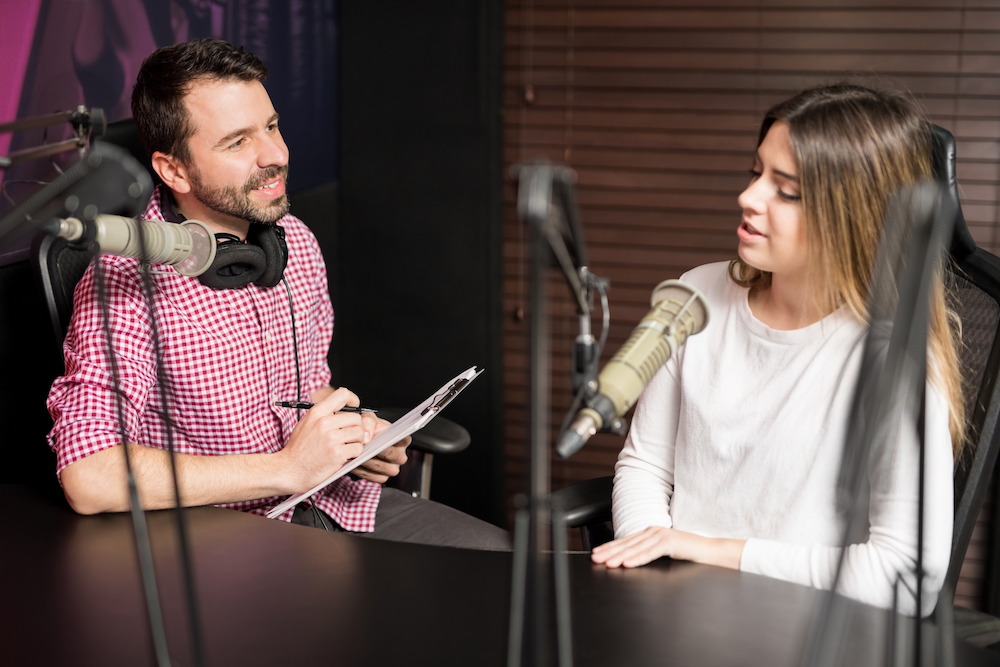Creating a collaborative learning opportunity through a podcast assignment
 This blog post is part two in an ongoing series from English faculty member Nolde Alexius. Check out the first installment detailing the technology and learning outcomes from this assignment.
This blog post is part two in an ongoing series from English faculty member Nolde Alexius. Check out the first installment detailing the technology and learning outcomes from this assignment.
A podcast is a wonderful opportunity for in-class collaboration. To create productive and meaningful collaborative experiences, be thoughtful about how you will guide students to form their podcast groups. Help them to ensure that their groups are made of students who share their interests or their academic discipline, and who possess collaborative potential or, in other words, a productive work ethic. To approach the task of forming student groups I assigned students a homework assignment that required their identification of research project interests as well as their criteria for staying motivated in a project. During class, students shared their completed worksheets with one another and self-selected their group members after careful consideration.
As for the specific content you would like your students to discuss during their podcast, consider that the seemingly insurmountable, apparently baked-in problem a lot of us have in our courses, the one we encounter every semester (mine is designing a useful and accessible approach to gathering and analyzing scholarly articles for undergraduate English composition students) is a wonderfully rewarding scope for a podcast assignment. When students talk with one another they discover what they know and what they don’t, they articulate their questions and the obstacles they perceive to doing their work, and they internalize key concepts that they ultimately can apply in your course. That problematic area you have been wanting to address in your course may be beautifully confronted by your students within the context of a podcast assignment.
As with any new assignment, I discovered areas to improve:
Dead air. On one hand, the unscripted nature of my podcast assignment resulted in spontaneity and enthusiasm in my students’ conversations. On the other hand, a few podcast groups encountered a moment during which none of them spoke, commonly referred to as dead air. Consider that knowing how to talk about their topic is important to students. Giving them a bit of a structure that will accommodate a conversation while avoiding a script means they will be more likely to avoid dead air. A general rule of thumb I found important to explain was that the entire group is responsible for avoiding dead air. All group members should be ready to keep the conversation going.
Address participation expectations. My podcast assignment instructions explained that every student was required to converse during the podcast. For practical reasons I did not specify a minimum number of minutes every student was required to talk. Two or three groups experienced one of their members taking up so much of the air that little time remained for the other members to converse. Another problem arose when one group member interrupted and diverted a lively conversation in order to make sure he participated. In your instructions, address this possibility with your students. For example, ask them to discuss how the ideas they will each contribute build, or otherwise relate.
Keeping time. If you are timing your students’ podcasts then set your timer one minute longer than required. At the required time, signal your students that their time is up. They’ll know they have one more minute to conclude their podcast. This will allow them to avoid an abrupt end to their conversation.
At the final step of the assignment, assigning grades to your students, you have several options to consider. Do you want to assign a grade based on your real time experience of listening to your students converse? Do you want to play back the podcasts before grading? Do you envision additional learning outcomes that may be achieved if students possess recordings of their podcasts? After all, a delivered podcast is a text in the form of unadulterated sound, leaving visual images to the audience’s imagination. How could your students continue to learn and discuss your course material, armed with an audio version of their own learning process?
Are you interested in adding an assignment like Nolde's to your course? CxC is here to help you design an effective C-I course that integrates technology like podcasting. Reach out at cxc@lsu.edu and let us know how we can help!